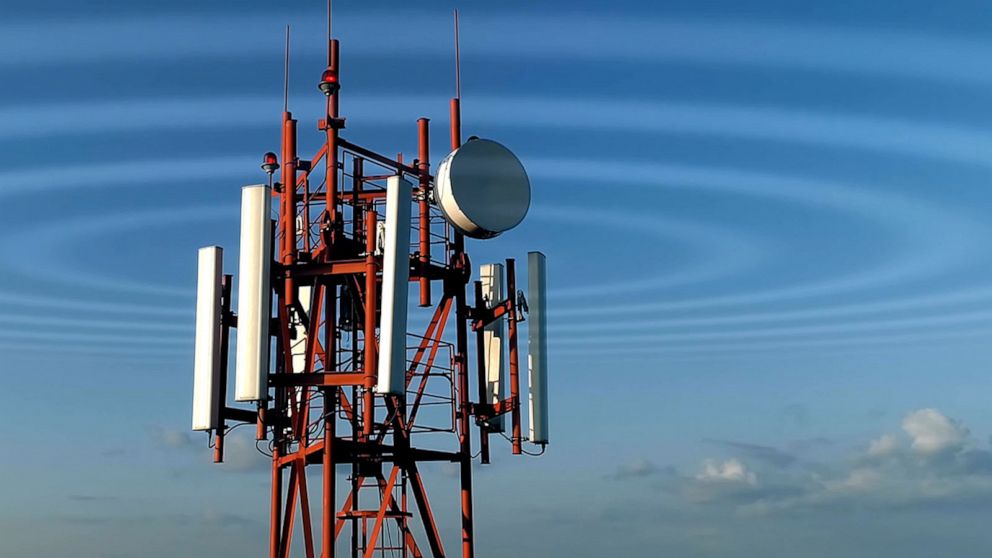If you've ever wandered through a city you might have noticed tiny cell towers for 5G placed on poles for street lighting. They look like little boxes however, they're actually transmitting wireless signals from mobile providers to your phone.
The smaller ones are being replaced by larger, purpose-built cell towers. While they're not as noticeable however, they could create problems for those who live nearby.
It is the Federal Communications Commission's Radiation Exposure Thresholds
The FCC's Radiation Exposure Thresholds define the maximum amount of time an individual can be exposed to electromagnetic energy generated by wireless devices. The exposure limits are based upon scientific research that show that RF energy can cause harm to health.

The rate of absorption called the specific absorption rate (SAR) is an indication of the radiofrequency energy that is taken up by tissues. It's typically 1.6 Watts per kilogram calculated over one gram of tissue.
But, since what is a safe distance from a cell tower operates at higher frequencies this could be able to cause greater energy intensity on the skin as well as other body areas. This can lead to many potential harms, including exacerbated development of skin diseases such as dermatitis, skin cancer and cataracts.
Due to the possible negative effects of 5G radiation, PSU has chosen to create a general power density limit of 4 mW/cm2 averaged across 1 centimeter, and never to exceed 30 minutes for the entire 5G spectrum at 3000 GHz. This localized limit is in accordance with the peak SAR spatial-average of 1.6 W/kg, which is averaged over 1 grams of tissues at six GHz.
The FCC's Maximum Exposure Thresholds
Have you ever used a mobile phone, you're probably aware that a safe range from the tower is around 400 meters. This is due to the power of the transmission of the cell tower is significantly increased the farther you are from it.
While this sounds like something that's good but the truth is that those living close to towers might be more susceptible to health problems. For instance, a 2014 study in India found that residents living within 50 meters from cell towers suffered much more health problems than those living further away from the antennas.
But, the study revealed that those who relocated into areas farther away from the cell towers saw their symptoms improve within a couple of days. Another study has demonstrated that exposure to extreme levels of radiofrequency electromagnetic fields (EMFs) can lead to cancer, brain tumors and other health issues.
This is because RF radiation, which is used in wireless communication, can penetrate the human body's exterior layer, which is the skin. This is vital to be aware of since the skin functions as a shield against mechanical injury, infection caused by pathogenic microorganisms and infiltration of toxic substances. what is a safe distance from a 5g cell tower is also the largest organ in the human body, and is accountable for protecting other organs.
The FCC's Minimum Exposure Thresholds
The FCC's Minimum Exposition Thresholds are based upon numerous assumptions that are not supported by scientific evidence. These include the erroneous assumption that short-term exposures to RF radiations are not harmful due to the limited penetration into the body (i.e. thermal heating of tissue).
This also overlooks the deeper penetration of the ELF components of modulated RF signals, as well as the effects of brief bursts of heat from pulsed RF waves. safe distance from cell tower do not correspond with current understanding of the biological effects of RF radiation. Therefore they shouldn't be considered for health protection exposure guidelines.
Furthermore there is the fact that both ICNIRP and FCC limit their maximum exposure limits to local peak SARs, based on the peak spatial specific absorption rate (psSAR) that is an inadequate dosimetric tool to assess the amount of exposure to RF radiation. In particular it is inconclusive for frequencies above 6 GHz. In addition, psSAR is not been tested for RF radiation exposed to other environmental agents such as sunlight. Interactions of RF radiation and other environmental agents could cause synergistic or antagonistic impacts. This would result in an increased risk of adverse health effects. For instance, exposure to RF radiation with sunlight may raise the chance of developing skin cancer, and may also exacerbate other skin disorders, such as acne.
